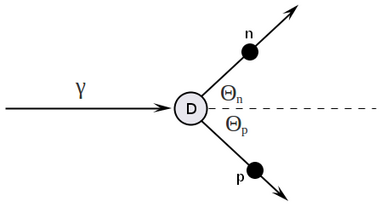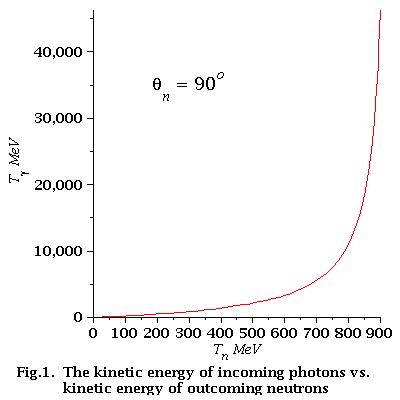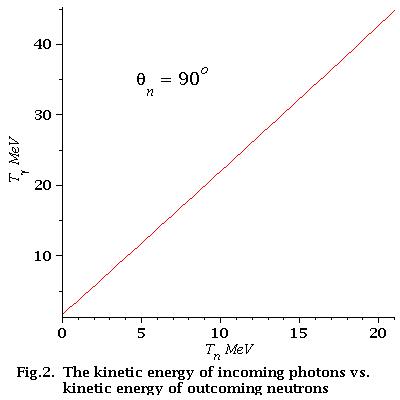Difference between revisions of "Neutron Polarimeter"
Jump to navigation
Jump to search
| Line 73: | Line 73: | ||
The neutron's kinetic energy as function of the neutron's time of flight is: | The neutron's kinetic energy as function of the neutron's time of flight is: | ||
| − | <math>T_n = m\left[ \frac{1}{\sqrt{1-\left(\frac{l}{c\ t}\right)^2}} -1 \right]</math> | + | <math>T_n = m (\gamma - 1) = m\left[ \frac{1}{\sqrt{1-\left(\frac{l}{c\ t}\right)^2}} - 1 \right]</math> |
[[File:formula0.png]] | [[File:formula0.png]] | ||
Revision as of 03:11, 17 June 2010
Analysis of energy dependence
four-vectors algebra
writing four-vectors:
Doing four-vector algebra:
Detector is located at , so
and visa versa
how it looks
low energy approximation
As we can see from Fig.2 for low energy neutrons (0-21 MeV)
energy dependence of incident photons is linear
Find that dependence. We have:
So, the equation of the line is:
Finally for low energy neutrons (0-21 MeV):
example of error calculation
example 1
Say, we have, 10 MeV neutron with uncertainty 1 MeV, the corresponding uncertainly for photons energy is:
example 2
Say, we have, neutron with time of flight uncertainly is 1 ns
The neutron's kinetic energy as function of the neutron's time of flight is:
And it follows, that neutron's kinetic energy error as function of the neutron's time of flight error is:
Take the worth case 10 MeV neutron. The corresponding time of flight for detector 1 meter away is:
So neutron uncertainty is:
absolute:
relative:
Corresponding photon uncertainty is:
absolute:
relative:




